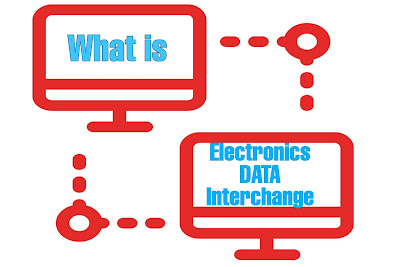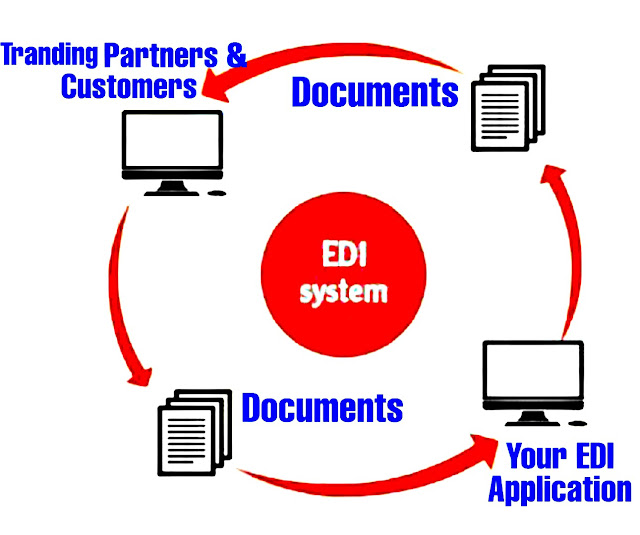What is Electronic Data Interchange ? | Working of Electronic Data Interchange
 |
| What is Electronics Data Interchange ? | Working of Electronics Data Interchange |
EDI full name is Electronic Data Interchange.
What is Electronic Data Interchange ?
It is a communication system in which data from one computer to another is transferred electronically from one computer to another computer because there is no paper work in transferring data. This is why it does not require any human intervention.
 |
| What is Electronics Data Interchange? |
The full name of EDI is Electronic Data Interchange. By its name we come to know that it is an electronic data interchange system.
Now a days EDI is mostly used in (B2B e-commerce) e-commerce. Very much by EDI Quantity of data is transferred, usually some EDI documents are used tSls:
1. Invoice
2. Purchase order
3. Shipping request
Advantages of Electronic Data Interchange
✓ It takes very less time to transfer the document because the data is transferred in electronic form.
✓ Can easily exchange data in it
✓ Accuracy is high
✓ It is a software that improves their efficiency.
✓ Data transfer is done at a lower cost.
✓ Data Entry is in the computer so there is no scope of fault in it
✓ It has better data exchange
Working of Electronic Data Interchange
There main steps of working of EDI is provided:
(1) First, we prepare the document or data to be transferred, that is, the data is collected and organized.
(2) These documents are then translated into EDI format by translator software.
(3) When we translate the document in EDI format, the documents are ready to be exchanged, then we connect with our business partner and exchange the document
(4) Transfer of document is done by HTTP, FTP, Value Added Network (VAN), narrative (point to point protocol) protocol methods.
(5) This document remains in the mail box until it can view and process the document from the mail box.
Components used in Electronic Data Interchange
1. Trending partners
Agree to exchange business information, data and documents through EDI. Medium, large and large organizations involved in various types of business activities are part of this group.
A standard format is agreed by both parties that does not require access to complex hardware and software information.
A translator (EDI) is used to convert raw data into meaningful information. Both parties communicate directly through a business application.
2. Translation Software:
First we prepare the document or data that needs to be transferred, that is, the data is collected and organized, then these documents are translated into EDI format by the translator software when we translate the document in EDI format.
So the documents are ready to be exchanged, then we connect with our business partner and exchange the document.
3. Communication:
Transfer of a document is done by HTTP, FTP, Value Added Network (VAN), narrative (point to point protocol) protocol methods.
This document stays in the mail box until it sees the document from the mail box. And does not process.
It follows a standard communication protocol such as
1. Modem:
It is a network hardware device that transmit data from one computer to another.
2. VAN:
A Value Added Network is a private network provider used to facilitate electronic data interchange (EDI).
A network that connects one organisation's computer systems to another.
3. Point to Point:
A direct communication link between two computers. This protocol used to establish a direct connection between two nodes.
It connects two routers directly without a host or any other networking device.


Nice Article
ReplyDeleteGood work
ReplyDelete